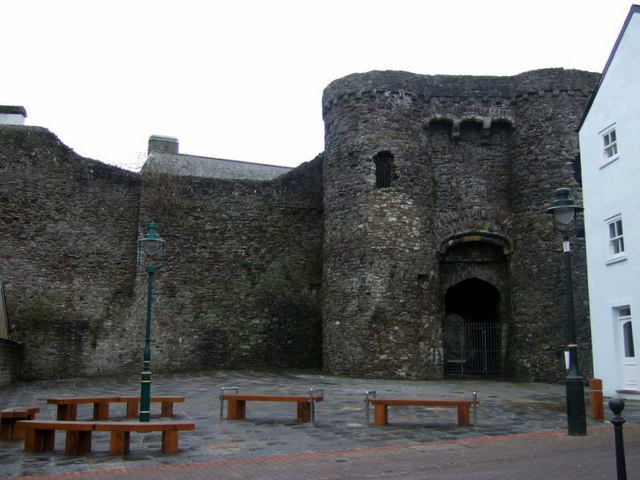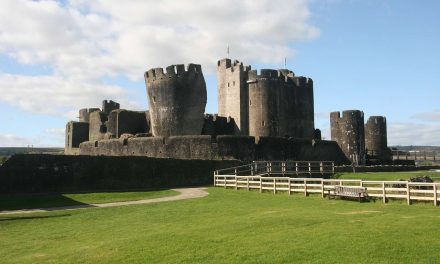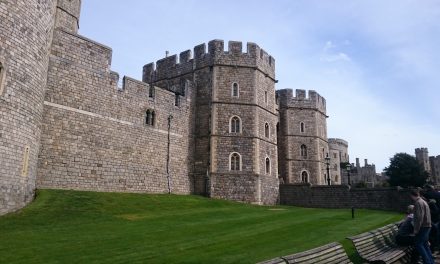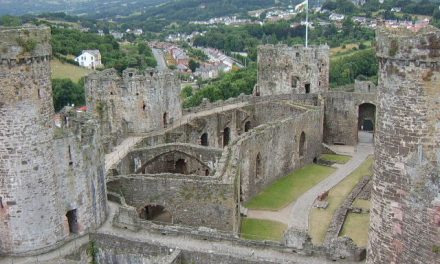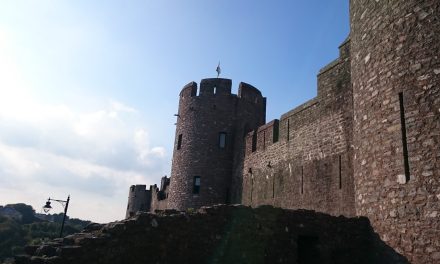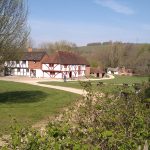Carmarthen Castle is a castle that everyone should go to and see if they want to discover the history that lies between its walls. There is so much to learn about when it comes to the history of this castle, and the best way to find out more about it is to see it for yourself.
Carmarthen Castle also isn’t the only castle in the area, so you could always extend your trip and take a look at some of the other castles that Carmarthenshire has to offer. If you are interested in history and castles, then it is definitely worth the visit.
In this article, we are going to tell you all about the history of the castle, so you can find out if this is somewhere that you would like to go. There is so much to see and learn, and you might even find out something new along the way. Just keep reading to find out more.
What to expect from our article
What is Carmarthen famous for?
One of the most popular attractions in Carmarthen is Carmarthen Castle, which is a ruined castle that is located in Carmarthen, West Wales, UK. It has an interesting history and has been captured and destroyed on many different occasions before it was rebuilt in stone during the 1190s.
Aside from Carmarthen Castle, Carmarthen is also known for its connections to Merlin and its Roman Heritage, but this does not mean that it is a town that is stuck in the past. Carmarthen is a mixture of rich history and modern developments.
Carmarthen is also the oldest continually occupied town in Wales, and it boasts Roman origins, as well as interesting links with the Arthurian legends of Merlin. It’s thought that Merlin was born here, and you can still go and see the last piece of Merlin’s oak in Carmarthenshire County Museum. Legend has it that if this oak is removed, the town will fall. This museum is free to enter, and it includes a variety of treasures, like mammoth bones, Roman gold, and Egyptian artefacts.
Within Carmarthen, you can visit the Roman Amphitheatre near Priory Street for a sneak peek into the lost civilisation that first settled in the area, and you can then go on to explore the ruins of the castle, which once protected the area.
You can also take a walk along Picton Terrace and view its elegant Regency houses for yourself, and wander around the stalls in Carmarthen Indoor Market. You could also take a stroll around Carmarthen Park, which is very close to the town centre. This park opened in 1900 and is home to the very first cycle track to be built in Wales, and is one of few to survive in working condition.
How many castles are there in Carmarthenshire?
There are a total of 12 main castles in Carmarthenshire, but there are also some other brilliant structures that are more than worth the visit. More inland, you will be able to find some excellent castle spots, like Carreg Cennen and the castle in Carmarthen town.
There are also other interesting structures to make note of if you are planning a visit to Carmarthenshire, like Paxton’s Tower and a Neo-Gothic Folly that was built in honour of Lord Nelson around 200 years ago. This structure can be found on top of a hill near Llanarthney in the Tywi Valley.
Who built Carmarthen Castle?
Carmarthen Castle is thought to have been built no later than 1094 by Willian fitzBaldwin on top of a steep buff that overlooks the bridging point over the River Tywi. This castle originally took the form of an earth and timber motte-and-bailey fortification, and the motte was topped with a timber palisade and round tower.
There were two baileys, which were the rectangular Inner Ward that housed the main domestic and administrative functions, and the smaller Outer Ward that could have been used for livestock.
This early castle was attacked by the Welsh in 1116 but managed to withstand the attack, and a town was founded soon after this. However, when Henry I died in 1135, it led to a period of contraction in Normal influence in Wales as the Barons became distracted by the power struggle that took place.
Later, in the Civil War in England, the Welsh exploited the situation and attacked Carmarthen Castle in 1137, where they were able to successfully capture it.
When was Carmarthen Castle built?
Carmarthen Castle was first built in 1094, and it was built by Norman William fitzBaldwin. It is possible that it was sited further down the river originally. After 1105, Carmarthen began to be referred to by name, so by this time, the castle was on the site that it can be found today.
The castle became of high importance really early on, and it was passed into the hands of the crown. Carmarthen Castle quickly became the administrative centre of south-west Wales, just as it had been under the Romans, and it was attacked many times throughout the struggles between the Welsh and the English in the 12th and 13th centuries.
One of the most famous of these attacks was the capture and destruction of Carmarthen Castle by Llewelyn the Great in 1215. After this, extensive rebuilding work was undertaken by William Marshal, the Earl of Pembroke, who managed to re-capture the castle in 1223. It is thought that this could have been the time when stone defences were built on the site of the original motte.
Who lived in Carmarthen Castle?
By the time that the early 12th century rolled around, important men had managed to secure themselves territory throughout South Wales. Roger de Montgomery, Earl of Shrewsbury, had secured Pembrokeshire, Henry de Beaumont, Earl of Warwick, had conquered the Gower, and Robert Fitzhamon, Baron of Gloucester, had overrun the Vale of Glamorgan. These Lordships commanded vast resources, which then prompted Henry I to seek out his own domain within South Wales in order to assert his own authority.
Henry I At Carmarthen Castle
Henry I chose Carmarthen, which was a site that had previously been a Roman fort and walled town, and was located in the centre of both Pembroke and Gower. The castle had already existed when he decided to take control of the area. The Welsh tried to attack the castle in 1116, but they were not successful. The town was founded soon after.
However, when Henry I died, it led to a period of contraction, and the Welsh were able to take advantage of the situation and they attacked the castle in 1137, this time, successfully.
The Normans at Carmarthen Castle
The castle was later retaken by the Normans, and in the late 12th century, Carmarthen Castle was just one of two castles in the South West of Wales to resist the forces of Rhys ap Gruffudd. Extensive modifications were made to the castle between 1181 and 1183, including the addition of a circular stone tower on top of the motte.
Wales Vs England
In 1215, the castle was attacked again by the Welsh, where it was partially destroyed. The castle was then held onto by the Welsh until 1223, when it was again recaptured by William Marshall, Earl of Pembroke. They began rebuilding the castle after this occurrence. The Welsh attacked again, leading to a 3-month long siege, but the English were able to resist the attack.
During the re-capture by William Marshall, Carmarthen Castle had been held by a variety of English magnates, and it was retaken back into direct Crown control in 1241. It was later adapted to include a range of new domestic apartments that were suitable for a Royal visitor.
At the same time that all of this was happening, Llywelyn ap Gruffudd rose to power after he had successfully defeated his Welsh rivals. He sought to rid Wales from the English and attacked the castle in both 1244 and 1246. However, the castle was able to withstand both attacks.
Henry III and His Successor
Henry III sent an army to the site in 1257, but his forces suffered heavy casualties from the Welsh, and Henry was eventually forced to acknowledge Gruffudd as Prince of Wales at the Treaty of Montgomery (1267).
Henry III was succeeded by his son, Edward I, in 1272, who successfully invaded the castle. Carmarthen Castle became the administrative centre of Carmarthenshire with Robery Tibetot appointed as Justiciar. His rule prompted a rebellion by Maredudd ap Rhys in 1287, and Carmarthen town was burnt to the ground. However, the castle survived the attack.
Edward I made it his mission to cement his control over Wales with new fortresses, and he also upgraded Carmarthen Castle itself. Despite the upgrades that took place, the castle surrendered to the forces of Owain Glyndwr upon his attack in 1403.
Henry IV took back the castle, but it was taken again by a large Franco-Welsh army in 1405. It was later recaptured by the English in 1406, and the rebellion’s fire was distinguished.
Is Carmarthen Castle worth visiting?
Yes, Carmarthen Castle is worth visiting if you want to see the fascinating remains of the castle and watch history come to life. There is so much history to be experienced here that you will not be disappointed with your visit.

